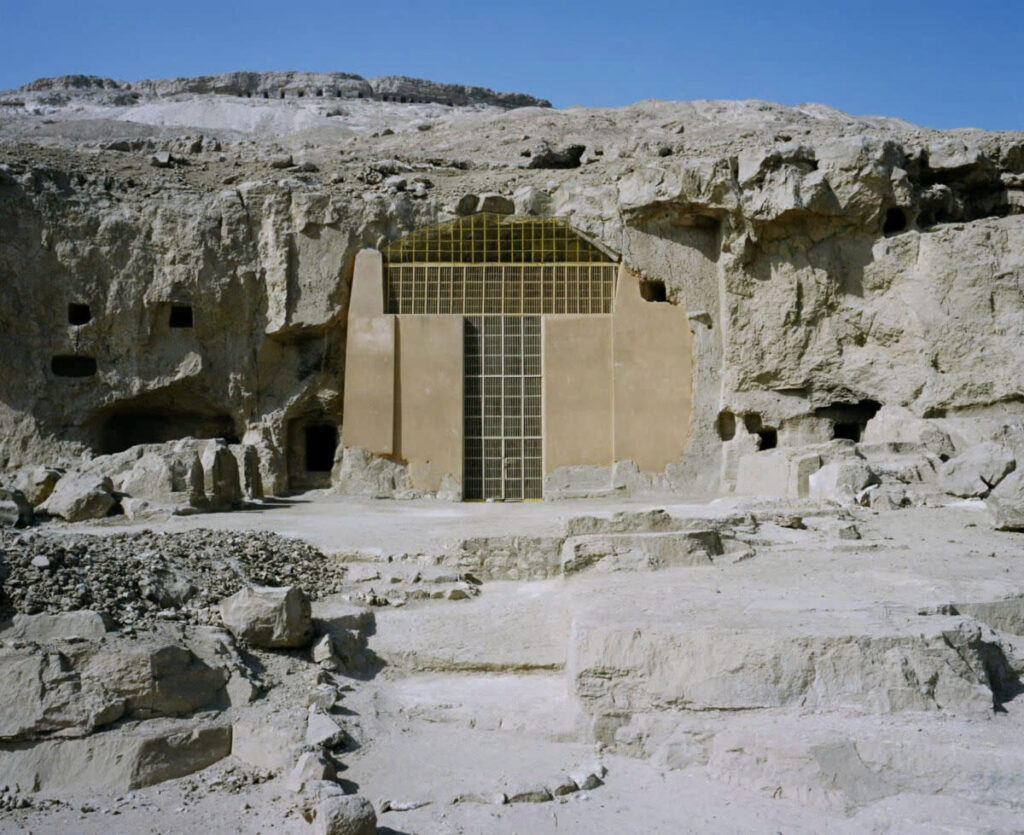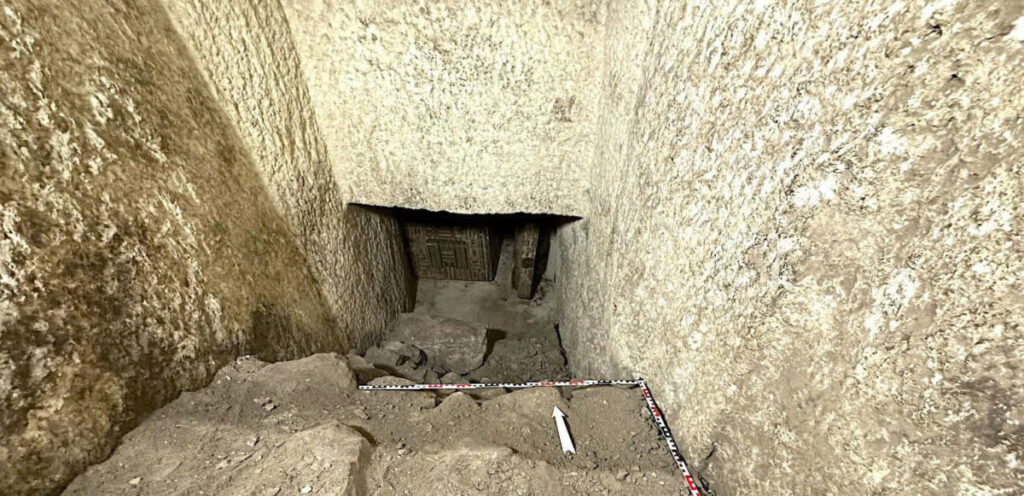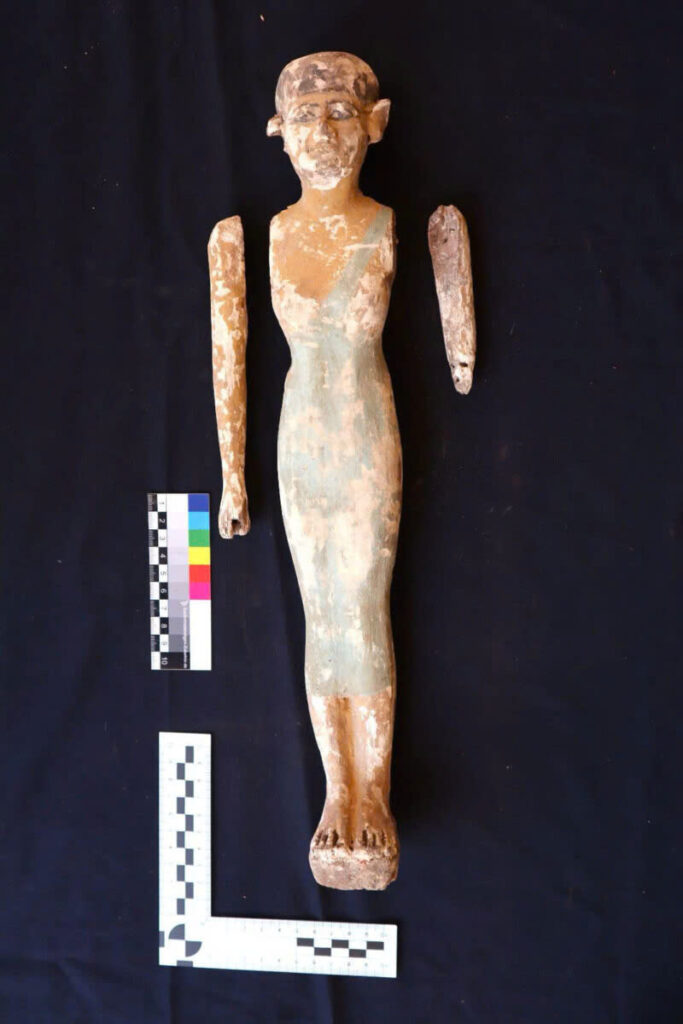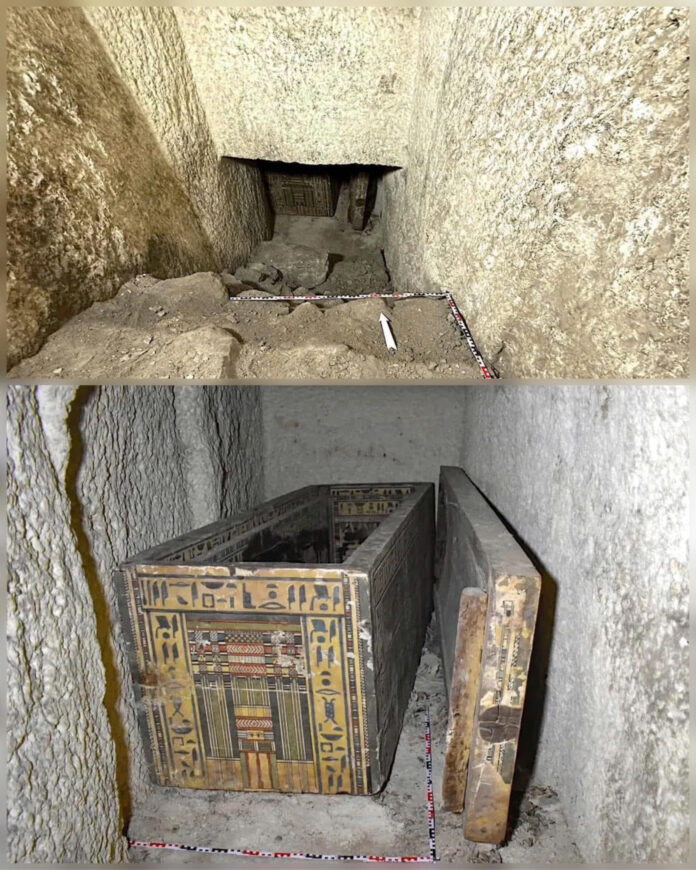The archaeological world has been stirred by an extraordinary finding in Asyut, Egypt – the discovery of a 4,000-year-old tomb belonging to Idi, daughter of the influential Middle Kingdom governor Djefaihapi. Located 50 feet beneath the earth’s surface and adjacent to her father’s grand tomb, this discovery offers an unprecedented glimpse into the cultural richness of ancient Egypt’s Middle Kingdom period.

A Noble’s Final Resting Place
The tomb’s architecture and contents reflect Idi’s elevated social status. Most notably, she was entombed in an elaborate double-coffin arrangement – a distinctive marker of nobility during this era. The outer coffin enclosed an inner one, both adorned with exquisite paintings and intricate designs, symbolizing the multi-layered journey to the afterlife and offering divine protection to the deceased.

Artistic Brilliance Preserved Through Time
Sacred Hieroglyphs and Their Meaning
Despite falling victim to ancient looters, the tomb has retained much of its original splendor. Hieroglyphic inscriptions identify Idi as the “lady of the house,” a prestigious title indicating her noble heritage. These carefully carved symbols, together with the surrounding artwork, served a deeper purpose beyond mere decoration – they were spiritual guides meant to ensure Idi’s safe passage through the afterlife.
Middle Kingdom’s Artistic Legacy

The tomb’s discovery highlights the often-overlooked artistic achievements of the Middle Kingdom period. While the New Kingdom era typically commands more attention, Idi’s tomb demonstrates the remarkable sophistication and artistic excellence that characterized this earlier period. The meticulous craftsmanship evident in every detail reveals a civilization deeply committed to its spiritual and cultural traditions.
Ancient Egyptian Burial Traditions

The elaborate nature of Idi’s tomb reflects the complex relationship ancient Egyptians maintained with death and the afterlife. Rather than viewing death as an endpoint, they saw it as a transformation requiring careful preparation and protection. Every element within the tomb – from the hieroglyphic inscriptions to the painted scenes – played a vital role in ensuring the deceased’s successful journey to the afterlife.
Cultural Significance and Modern Impact
This remarkable discovery serves as a bridge between ancient and modern worlds, offering invaluable insights into Middle Kingdom Egypt’s social, religious, and artistic practices. For contemporary scholars and enthusiasts alike, Idi’s tomb stands as a testament to the enduring sophistication of ancient Egyptian civilization and their profound understanding of life, death, and spiritual transformation.

Through this extraordinary find, we gain not just archaeological evidence, but a deeper appreciation for the rich cultural tapestry that defined one of history’s most fascinating civilizations.

